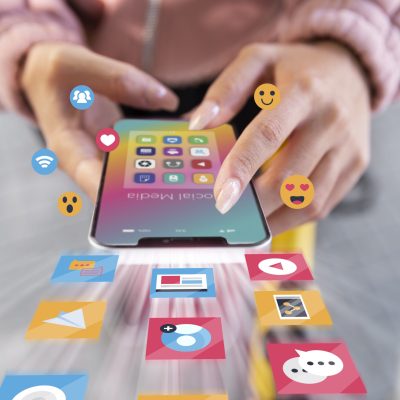Marketing has always been about connecting with the right audience at the right time. But in today’s fast-paced digital world, the way businesses reach and engage customers has changed dramatically. Advances in technology—from artificial intelligence (AI) to automation, data analytics, and social media—have completely reshaped the marketing landscape. Companies that embrace these tools gain a competitive edge, while those that resist risk falling behind.
So, how exactly is technology revolutionizing marketing, and what strategies can businesses adopt to stay ahead? Let’s break down the most impactful trends driving modern tech-driven marketing.
1. Artificial Intelligence: The Brain Behind Smarter Marketing
AI is no longer a futuristic concept—it’s at the core of many marketing strategies today. From chatbots that provide instant customer support to algorithms that predict consumer behavior, AI enables brands to make smarter decisions and deliver more personalized experiences.
Some key applications include:
-
Predictive analytics, which uses historical data to forecast trends and help marketers anticipate customer needs.
-
AI-powered content creation, where tools can help generate headlines, blog drafts, or ad copy, saving time for marketing teams.
-
Dynamic pricing models, allowing businesses to adjust prices in real-time based on demand and market conditions.
-
Enhanced customer segmentation, enabling marketers to tailor offers and messaging to highly specific audience groups.
For example, e-commerce giants use AI to recommend products based on browsing and purchase history, leading to higher conversions and customer loyalty.
2. Data-Driven Personalization
In the digital age, customers expect brands to know their preferences and deliver personalized experiences. Technology has made this possible at scale through data collection and analysis. Businesses now use data to craft highly targeted campaigns, ensuring that customers receive offers and messages tailored to their interests.
Personalization can take many forms:
-
Customized email campaigns with product recommendations.
-
Retargeted ads based on past interactions with a website.
-
Dynamic website content, where the layout or offers change depending on the visitor’s behavior or location.
According to studies, personalized marketing can lead to higher engagement rates and significantly boost sales. Customers are far more likely to connect with brands that make them feel understood.
3. Marketing Automation: Saving Time and Scaling Efforts
Automation tools have become essential for businesses of all sizes, allowing teams to streamline repetitive tasks and focus on strategy and creativity. Platforms like HubSpot, Marketo, and Mailchimp enable marketers to automate everything from email sequences to social media posting and lead nurturing.

Some benefits of automation include:
-
Efficiency, as campaigns can run 24/7 without manual intervention.
-
Improved customer journeys, with timely follow-ups and personalized content.
-
Better analytics, providing real-time performance data for optimization.
Automation doesn’t just save time—it allows businesses to deliver a more consistent and professional brand experience across all channels.
4. Social Media and Influencer Marketing
Social media remains one of the most powerful tools for connecting with audiences, but the way brands use these platforms has evolved. Organic reach is more limited, leading to a greater focus on paid advertising and partnerships with influencers.
Influencer marketing, in particular, has grown rapidly because of its ability to build trust. Consumers are more likely to trust recommendations from people they follow than traditional ads. Micro-influencers, with smaller but highly engaged audiences, have become especially valuable for niche markets.
Additionally, features like Instagram Reels, TikTok challenges, and YouTube Shorts allow brands to create engaging, bite-sized content that resonates with younger audiences. Businesses that adapt to these trends can significantly increase brand awareness and engagement.
5. Voice Search and Smart Devices
With the rise of voice assistants like Alexa, Google Assistant, and Siri, voice search is becoming a critical aspect of digital marketing. By 2025, voice-driven commerce is projected to account for billions in sales, making it essential for businesses to optimize their content for conversational queries.
This trend is driving marketers to:
-
Incorporate natural language keywords into their content.
-
Focus on local SEO, as many voice searches are location-based (“near me” searches).
-
Create voice-friendly content, such as FAQs and quick, concise answers.
As smart devices continue to integrate into daily life, voice search optimization will be a key factor in staying relevant.
6. Video and Interactive Content
Video has long been a dominant force in digital marketing, but now interactive and immersive content is taking things further. Technologies like augmented reality (AR) and virtual reality (VR) are giving customers hands-on experiences with products before they buy.
Examples include:
-
AR apps that let users “try on” makeup or furniture virtually.
-
Interactive videos where viewers can choose different story paths.
-
VR experiences for industries like travel or real estate, allowing customers to explore destinations or properties from home.
These tools not only capture attention but also increase conversion rates by helping consumers make confident purchasing decisions.
7. The Rise of Privacy-Conscious Marketing
As technology enables more data collection, it also raises concerns about privacy. Regulations like GDPR and CCPA have forced businesses to rethink how they handle customer information. Modern marketing now requires a balance between personalization and privacy.
Brands are turning to:
-
First-party data strategies, collecting information directly from customers instead of relying on third parties.
-
Transparent data practices, being upfront about how information is used.
-
Contextual targeting, which focuses on content rather than individual behavior to deliver ads.
Companies that respect privacy while still delivering relevant experiences are more likely to build trust and long-term relationships with customers.
How Businesses Can Stay Ahead
With technology evolving so quickly, businesses must remain agile to succeed in marketing. Here are some ways to stay competitive:
-
Invest in upskilling—train teams on AI tools, analytics, and automation platforms.
-
Experiment with emerging channels, like TikTok or AR campaigns, to reach new audiences.
-
Leverage data responsibly, focusing on transparency and consent.
-
Test and optimize continuously, using analytics to refine strategies.
The future of marketing belongs to companies that can blend creativity with technology, using data-driven insights to craft personalized, engaging experiences.

Final Thoughts
Technology has transformed marketing from a one-size-fits-all approach into a highly personalized, data-driven, and interactive experience. Whether it’s AI-driven personalization, voice search optimization, or immersive AR campaigns, businesses that embrace these tools can connect with audiences in ways that were impossible a decade ago.
The key is not just adopting new technologies, but using them strategically to create authentic, engaging relationships with customers. In this era of digital innovation, those who innovate, adapt, and personalize will lead the future of marketing.





